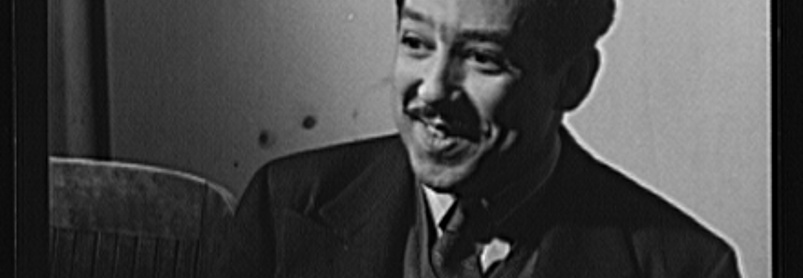In “Bop”, the Socratic method has been inverted, because usually the teacher challenges the student. This indicates multiple factors at play: on the one hand, the question of what counts as knowledge is raised. In other words, Simple’s wisdom does not come from formal investigation; it comes from real life experience. This empirical knowledge finds its way of transmission through a very peculiar vocabulary, bebop.
Additionally, Simple is not the usual image of a teacher; in fact, his role in the dialogue stands in a lower hierarchical position than the narrator. We can interpret that Simple’s lack of power in Hughes’ piece illustrates the social marginalization caused by racial discrimination. Simple said: “In some parts of this American country as soon as the police see me, they say, ‘Boy, what are you doing in this neighborhood?’” (Page 191). Of course, this tells us that Simple is black; not explicitly stated but inferred from the setting and dialogue. Later he will identify himself as a “colored man.”
The time setting is a key factor because the meeting takes place on the Sabbath, a sacred day. It is evident that Simple worships Bebop music so it is not strange that the author chose this day for the setting. Furthermore, the Sabbath is also associated with rest. Rest is a privilege that African Americans have rarely had access to so Bebop can be understood as the musical expression of spiritual rest. The soul rests in pitches, rhythms and chords that express the desired freedom.
If we consider the history of jazz, we find this longing for spiritual and physical rest throughout. The roots of black music come from the spirituals sung by slaves while working in the fields. Crying out for freedom, planning escapes, and looking forward to the liberation of the afterlife are just some of the themes we find in the spirituals. At church, God’s embassy of freedom on earth, the responsorial practice of Gospel spirituals gave birth to the Blues: a collective ritual where musicians experience the ecstasy of redemption through repetition and improvisation. Improvisation is crucial in Bebop because it represents the emancipation of sound, something that the narrator does not understand: “All that nonsense singing reminds me of Cab Calloway back in the old scat days.” (Page 190).
The outdoors configuration is associated with bebop in a contradictory way; jazz music has always been played in small hidden nightclubs. Again, the location supports Simple’s liberation through music: “Set down here on the stoop with me and listen to the music”. Moreover, Simple’s attitude when listening to jazz also reveals his indifference to authority: “I’ve heard your landlady doesn’t like tenants sitting on her stoop.” Simple replies “Pay it no mind.” (Page 190).
Historically, in the rural south it was common for musicians to play and sing while sitting on the front porch; sometimes a group would gather, sometimes it would be a lone bluesman. After “The Great Migration” many African Americans kept this tradition by sitting on the steps of their buildings in the city, playing or listening to music. Sitting on the stoop helps establish the history of how black music has been made and shared; it also places us firmly in an African American neighborhood.
The music surrounding the characters is the starting point for Simple’s hypothesis about bebop. Dizzy Gillespie triggers an onomatopoeic singing on Simple: “Ool-ya-koo”. These sounds make no sense to the narrator. The old man starts his explanation. All these sounds form a code that all black musicians shared: violence and suffering. Simple understands this “language of onomatopoeias” because he has been a victim and witness of the racial abuse of the police. So, every single syllable makes complete sense to him. How does one describe the traumas of racial violence; It literally leaves one at a loss for words. So, here we have the creation of musical sounds, both vocalized and instrumentalized, that elicit the feelings of that experience.
The dialogue between Simple and I (teacher and student) undergoes a kind of distortion in the communication. The reason for that relies on the absence of a common code. They get frustrated in the discussion because their vocabulary is completely different; Simple finds absolute meaning in every simple note of bebop music, while “I” does not. As a result, they feel disappointed for each other: “Your explanation depresses me. Your nonsense depresses me.” (Page 192).
The setting in which the conversation takes place is austere, but a lot of information about Simple is inferred from all of these subtle details. However, we know nothing about the narrator but his lack of knowledge and care regarding black music. It is not a coincidence that this character is anonymous and first person. This can be interpreted as a fundamental misunderstanding of the society about black music and black history.
These inferences rest on the first two sentences of a masterly constructed dialogue. The author elaborates an exterior setting that reflects the inner universe of the characters, especially Simple’s. The vocabulary used supports the idea of music as a language; but also describes Bebop as a specific code which not all listeners and players share.
The concept of communication through music is defined by the common feelings and experiences that musicians have; that is why Simple and “I” get frustrated in this “musical” dialogue.






